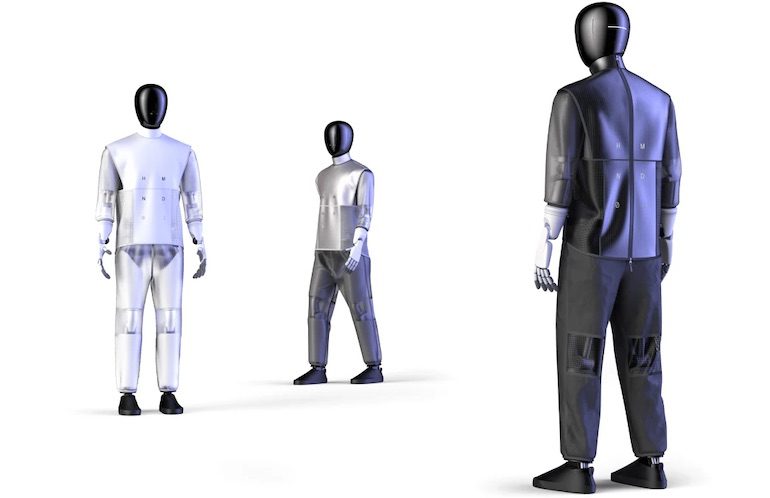Introduction
The world of humanoid robotics is evolving at an unprecedented pace, with new developments surfacing almost every week. The latest breakthrough comes from London-based startup Humanoid, which has unveiled its first humanoid robot, HMND 01. This cutting-edge robot is designed to work alongside humans in various industries, demonstrating remarkable advancements in mechanical design, motion control, and artificial intelligence integration.
Founded in 2024 by serial entrepreneur Artem Sokolov, Humanoid.ai, also known as SKL Robotics Ltd., aims to develop commercially scalable, safe, and general-purpose humanoid robots. With a team of experts in robotics, AI, and industrial design, the company is committed to creating intelligent and adaptable machines that can seamlessly integrate into existing human-centric environments.
A Vision for Human-Robot Harmony
“At Humanoid, our team believes in a future where humans and machines work side by side, not in competition, but in harmony,” stated Sokolov. “This societal shift will address social issues such as workforce shortages and an aging population while giving people more freedom to focus on creative and meaningful work. The strongest argument in favor of humanoid robots is that the world is already designed for humans, allowing them to integrate and adapt quickly.”
The unveiling of HMND 01 marks a significant step toward this vision, showcasing a humanoid robot that is not just a technological marvel but also a potential solution to real-world labor challenges.
HMND 01: A Modular and Adaptable Humanoid Robot
Humanoid has designed HMND 01 with flexibility in mind. Standing 175 cm (5 ft. 9 in.) tall and weighing 70 kg (154 lb.), this robot can walk at a speed of 1.5 m/s (5.4 kph or 3.3 mph). It boasts an average runtime of four hours and can carry payloads of up to 15 kg (33 lb.).
The company claims that HMND 01 achieves “human-level or higher” manipulation speeds, enabling it to perform complex tasks with precision. Additionally, it is engineered to navigate confined spaces accurately, making it suitable for a wide range of environments.
A key highlight of HMND 01 is its modular design, allowing customers to customize the robot according to their needs. Users can swap different upper-body, lower-body, and end-effector configurations, enhancing adaptability while reducing overall costs. This modular approach ensures that businesses can tailor the robot to meet specific industry requirements without excessive investment in custom-built systems.
Another innovative feature of HMND 01 is its interchangeable garments. These protective coverings not only shield the robot’s internal systems but also help it adapt to different environments. Whether operating in manufacturing, logistics, or customer service, the ability to change garments ensures that HMND 01 remains efficient and well-suited for its task.
Transforming Industries: Use Cases for HMND 01
Humanoid has built HMND 01 with hardware and software stability as core principles, ensuring a low total cost of ownership (TCO) and scalability for mass commercialization. The robot is designed for diverse applications, including:
- Warehousing and Logistics: Goods handling, picking and packing, kitting, and part handling.
- Retail and Manufacturing: Automating tasks in fulfillment centers and retail environments.
- Public Services: Performing sanitation, security, and maintenance tasks in urban settings.
Humanoid is already in discussions with leading retail companies for pilot projects, with plans to develop and test two prototype platforms—wheeled and bipedal—throughout 2025.
The Growing Market for Humanoid Robots
The humanoid robotics industry is experiencing rapid growth, with increasing investments and market projections that suggest a bright future. According to ABI Research, the global humanoid robotics market is expected to experience a compound annual growth rate (CAGR) of 95% from 2022 to 2030, reaching a value of $6.5 billion by the end of the decade.
In 2025 alone, annual shipments of humanoid robots are projected to reach 1,000 units, with an estimated 182,000 units deployed by 2030. This surge in adoption is driven by technological advancements and an increasing demand for automation solutions across various industries.
Adding to this momentum, humanoid robotics startup Apptronik Inc. recently raised $350 million in Series A funding, highlighting the growing investor confidence in the sector. As more companies enter the space, competition and innovation are expected to accelerate, leading to even more sophisticated humanoid robots in the coming years.
Conclusion
With the unveiling of HMND 01, Humanoid is positioning itself as a key player in the humanoid robotics revolution. By focusing on modular design, AI-driven adaptability, and practical industry applications, the company is paving the way for robots that can seamlessly work alongside humans.
As the market for humanoid robots expands, businesses across sectors—from logistics to retail—will need to assess how they can integrate these machines into their workflows. With advancements happening at an unprecedented pace, the future of human-robot collaboration is closer than ever.
The rise of humanoid robots like HMND 01 is not just a technological milestone—it is the dawn of a new era where machines and humans coexist, complementing each other’s strengths. The next few years will be crucial in determining how these robots shape the global workforce and redefine industries as we know them.
What do you think about the future of humanoid robots? Will they become a common part of our daily lives? Share your thoughts in the comments below!



